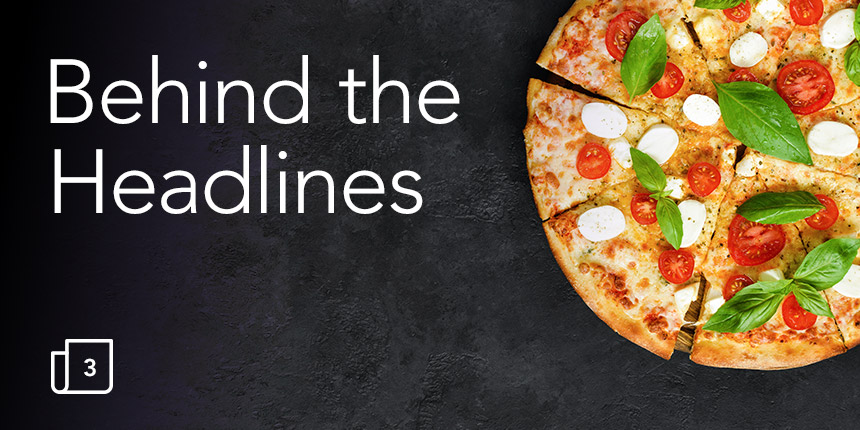Another week, another tale of woe for brick-and-mortar businesses. This time, we learned that British restaurant chain PizzaExpress was at risk of folding, following in the footsteps of Jamie Oliver’s Italian restaurants and long-established travel operator Thomas Cook. PizzaExpress ended 2018 with a staggering $1.37bn of debt, resulting in the company spending more than $112m in interest payments alone each year.
It is surprising news for a number of reasons. PizzaExpress was acquired by Hony Capital for $1.1bn just three years ago—and as recently as last month, market research firm YouGov listed them as the UK’s second-favorite casual dining experience in terms of “brand health”:
| RANK | BRAND | 2019 SCORE |
| 1 | Greggs | 17.1 |
| 2 | PizzaExpress | 14.3 |
| 3 | JD Wetherspoon | 14 |
| 4 | Costa Coffee | 13.4 |
| 5 | Zizzi | 10.2 |
So, what went wrong? Well, speculation is as rife as the over-use of puns about them “running out of dough” in the British press, but there are a few common themes in a struggling market that sees more restaurant locations close every year:

Source: The Guardian
Firstly, the casual-dining market has become somewhat over-saturated after initially booming off the back of the financial crisis in 2008. Diners are now faced with a dizzying array of choices, and simply offering good quality, reasonably priced food isn’t enough to survive anymore. The ever-increasing demands of the buying public—and the ever-decreasing spend they’re willing to part with—mean that restaurants of all shapes and sizes are having to innovate. offer something special to entice diners inside, and provide better customer experiences than ever before.
So, what can brands actually do?
- Restaurants can use data to their advantage by combining customer-level analytics with transactional data to reveal practical, actionable insights.
- Location analytics and geo-fencing are also incredibly useful to win local hearts and minds, especially for brands that are able to tailor their messaging according to prospects’ exact locations in an increasingly mobile-first world.
- Big brands can also take inspiration from independent restaurant businesses, as DAC UK’s resident foodie Mike Fantis recently explained.
And for dessert: Could your email signature land you in legal trouble?
In other news, it seems that email signatures can constitute a “legally binding agreement”, as demonstrated in a potentially precedent-setting court case last week.
In effect, anything that you put your name to, especially relating to agreeing terms of service or commitments from your side, could now be seen as legally binding, even though one hasn’t “technically” signed anything. Your email signature—simply the appearance of your name in your email footer—could be deemed to be as legally binding as your actual signature.
Will businesses move to towards instant messaging system to avoid the potentially legally binding nature of email signatures? Will we see IT teams add legal disclaimers to email footers as a matter of routine? Would that even be enough?
As marketers continue to adjust to life in a post-GDPR world, here’s hoping it doesn’t become another huge administrative and logistical overhaul for how companies communicate and operate.




